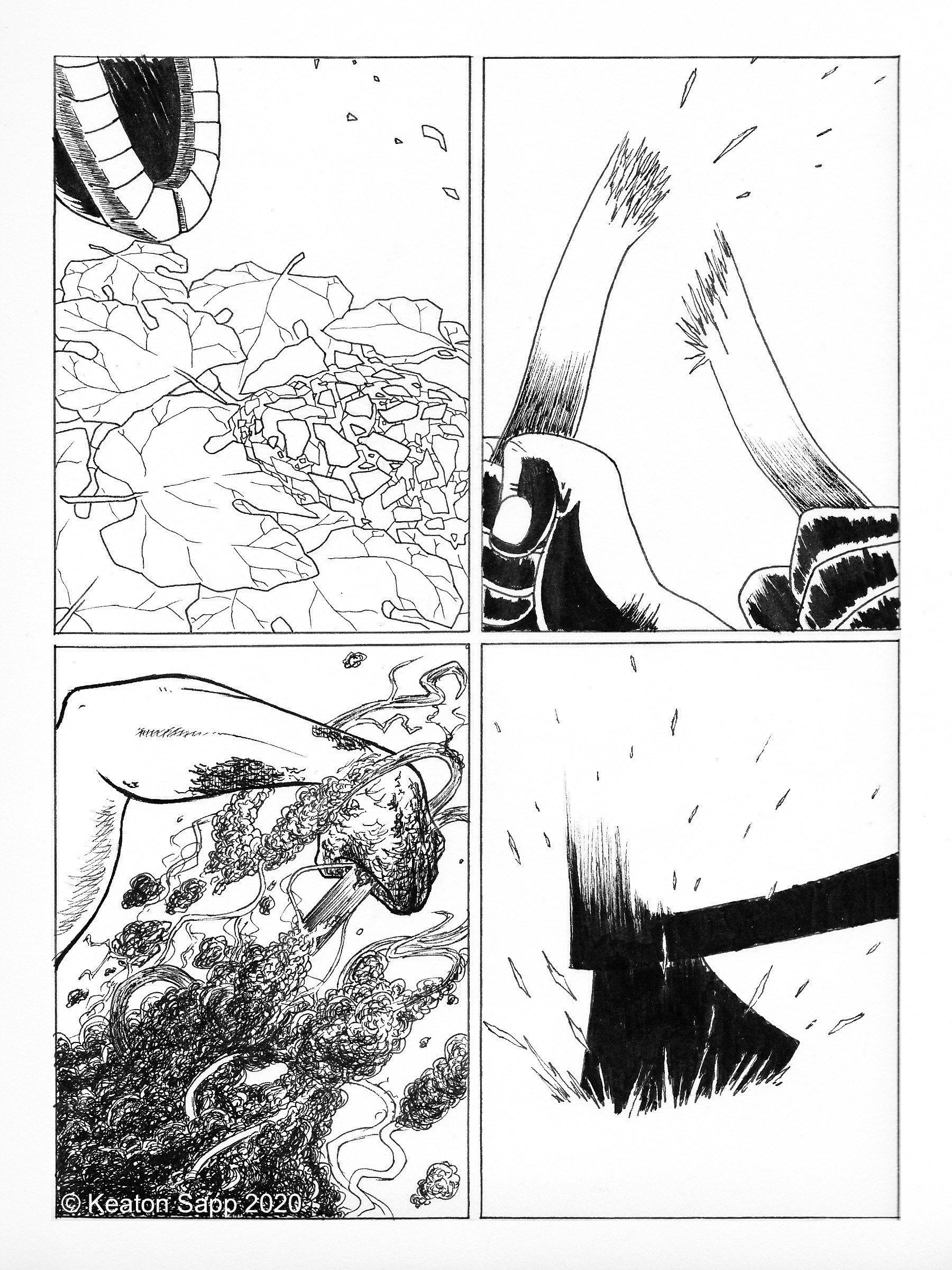The Fifth Station of the Cross is installed in the Grace Gallery and is titled, “The Crucifixion.’ It takes its inspiration from Matthew 27:27-44 which reads,
Then the soldiers of the governor took Jesus into the governor’s headquarters, and they gathered the whole battalion before him. And they stripped him and put a scarlet robe on him, and twisting together a crown of thorns, they put it on his head and put a reed in his right hand. And kneeling before him, they mocked him, saying, “Hail, King of the Jews!” And they spit on him and took the reed and struck him on the head. And when they had mocked him, they stripped him of the robe and put his own clothes on him and led him away to crucify him.
As they went out, they found a man of Cyrene, Simon by name. They compelled this man to carry his cross. And when they came to a place called Golgotha (which means Place of a Skull), they offered him wine to drink, mixed with gall, but when he tasted it, he would not drink it. And when they had crucified him, they divided his garments among them by casting lots. Then they sat down and kept watch over him there. And over his head they put the charge against him, which read, “This is Jesus, the King of the Jews.” Then two robbers were crucified with him, one on the right and one on the left. And those who passed by derided him, wagging their heads and saying, “You who would destroy the temple and rebuild it in three days, save yourself! If you are the Son of God, come down from the cross.” So also the chief priests, with the scribes and elders, mocked him, saying, “He saved others; he cannot save himself. He is the King of Israel; let him come down now from the cross, and we will believe in him. He trusts in God; let God deliver him now, if he desires him. For he said, ‘I am the Son of God.’” And the robbers who were crucified with him also reviled him in the same way.
The brutality of this means of execution was intended to prolong the death of the one crucified and make it as painful as possible. The word “crucifixion” has lent itself to a word in English to describe this sort of pain, “excruciating.”
In his drawing, Keaton Sapp has been using the image of a fig tree, leaf, and fruit to symbolize Christ. Especially in the books of the prophets, the fig tree is a symbol of Israel. Jesus takes up this image when he curses the fig tree only a few days earlier. You’ll recall in Matthew 21:19-21,
And seeing a fig tree by the wayside, he went to it and found nothing on it but only leaves. And he said to it, “May no fruit ever come from you again!” And the fig tree withered at once. When the disciples saw it, they marveled, saying, “How did the fig tree wither at once?” And Jesus answered them, “Truly, I say to you, if you have faith and do not doubt, you will not only do what has been done to the fig tree, but even if you say to this mountain, ‘Be taken up and thrown into the sea,’ it will happen.
The cursing of the fig tree has layers of meaning, but one of those layers foreshadows the cursing which the true Israel, Jesus, will bear to move the mountain which obstructs our life with God. Jesus, who for us and for our sins was pulled off, thrown down, stepped upon, was wrested and broken, was pulled up and thrown down, was cut down. Each frame of drawing depicts the both the violence of the crucifixion and the contempt of those who crucified him. The words from Thomas Kelly’s hymn, “Stricken, Smitten, and Afflicted, capture the significance of the crucifixion. Here is the second verse,
Tell me, ye who hear him groaning,
was there ever grief like his?
Friends thro’ fear his cause disowning,
foes insulting his distress;
many hands were raised to wound him,
none would interpose to save;
but the deepest stroke that pierced him
was the stroke that Justice gave.
On Holy Thursday and Good Friday, we will remember the last hours of Jesus’ passion and death. Both services will be live streamed at 7:00pm.

